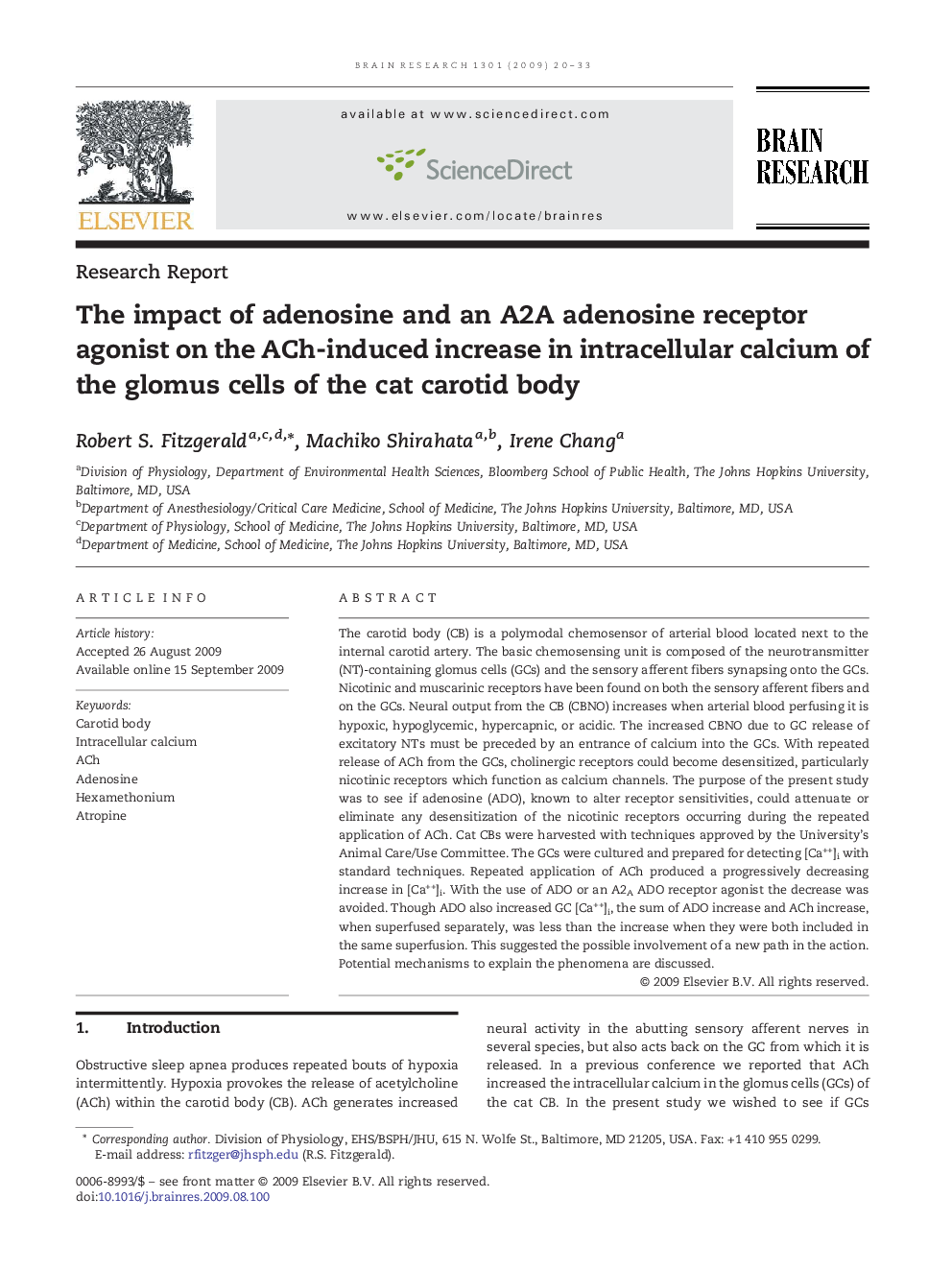| Article ID | Journal | Published Year | Pages | File Type |
|---|---|---|---|---|
| 4327704 | Brain Research | 2009 | 14 Pages |
Abstract
The carotid body (CB) is a polymodal chemosensor of arterial blood located next to the internal carotid artery. The basic chemosensing unit is composed of the neurotransmitter (NT)-containing glomus cells (GCs) and the sensory afferent fibers synapsing onto the GCs. Nicotinic and muscarinic receptors have been found on both the sensory afferent fibers and on the GCs. Neural output from the CB (CBNO) increases when arterial blood perfusing it is hypoxic, hypoglycemic, hypercapnic, or acidic. The increased CBNO due to GC release of excitatory NTs must be preceded by an entrance of calcium into the GCs. With repeated release of ACh from the GCs, cholinergic receptors could become desensitized, particularly nicotinic receptors which function as calcium channels. The purpose of the present study was to see if adenosine (ADO), known to alter receptor sensitivities, could attenuate or eliminate any desensitization of the nicotinic receptors occurring during the repeated application of ACh. Cat CBs were harvested with techniques approved by the University's Animal Care/Use Committee. The GCs were cultured and prepared for detecting [Ca++]i with standard techniques. Repeated application of ACh produced a progressively decreasing increase in [Ca++]i. With the use of ADO or an A2A ADO receptor agonist the decrease was avoided. Though ADO also increased GC [Ca++]i, the sum of ADO increase and ACh increase, when superfused separately, was less than the increase when they were both included in the same superfusion. This suggested the possible involvement of a new path in the action. Potential mechanisms to explain the phenomena are discussed.
Related Topics
Life Sciences
Neuroscience
Neuroscience (General)
Authors
Robert S. Fitzgerald, Machiko Shirahata, Irene Chang,
